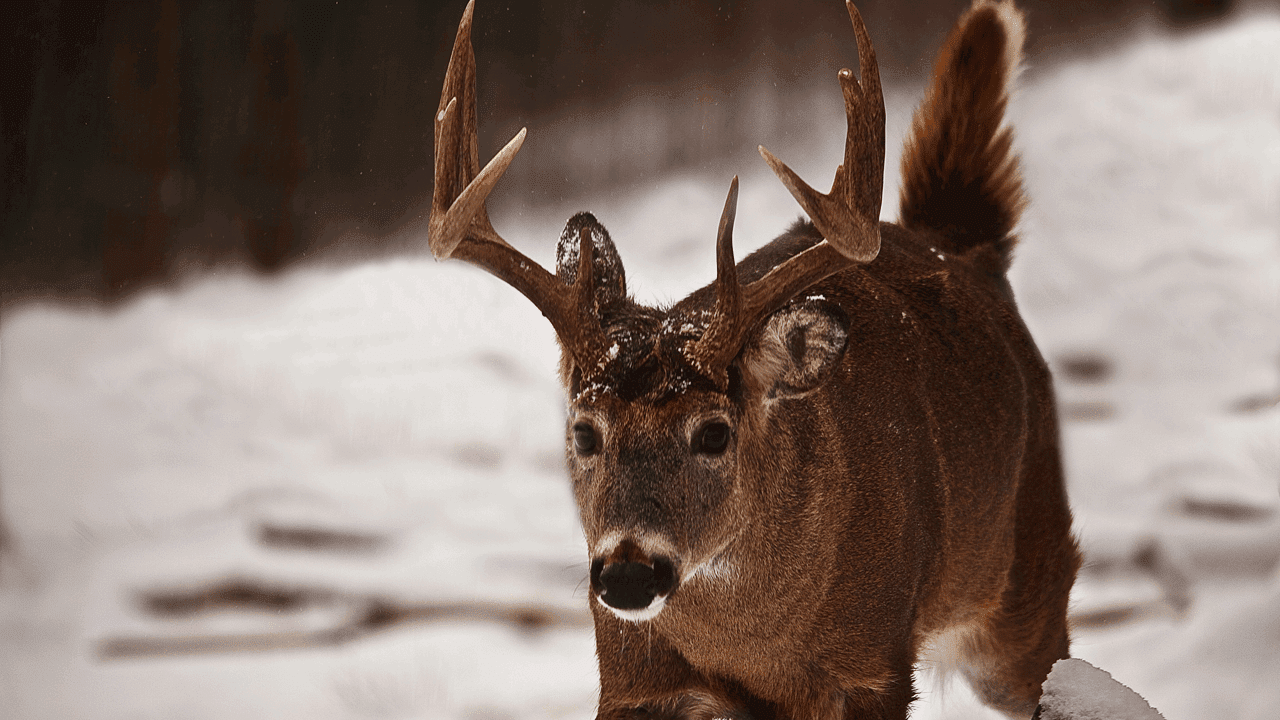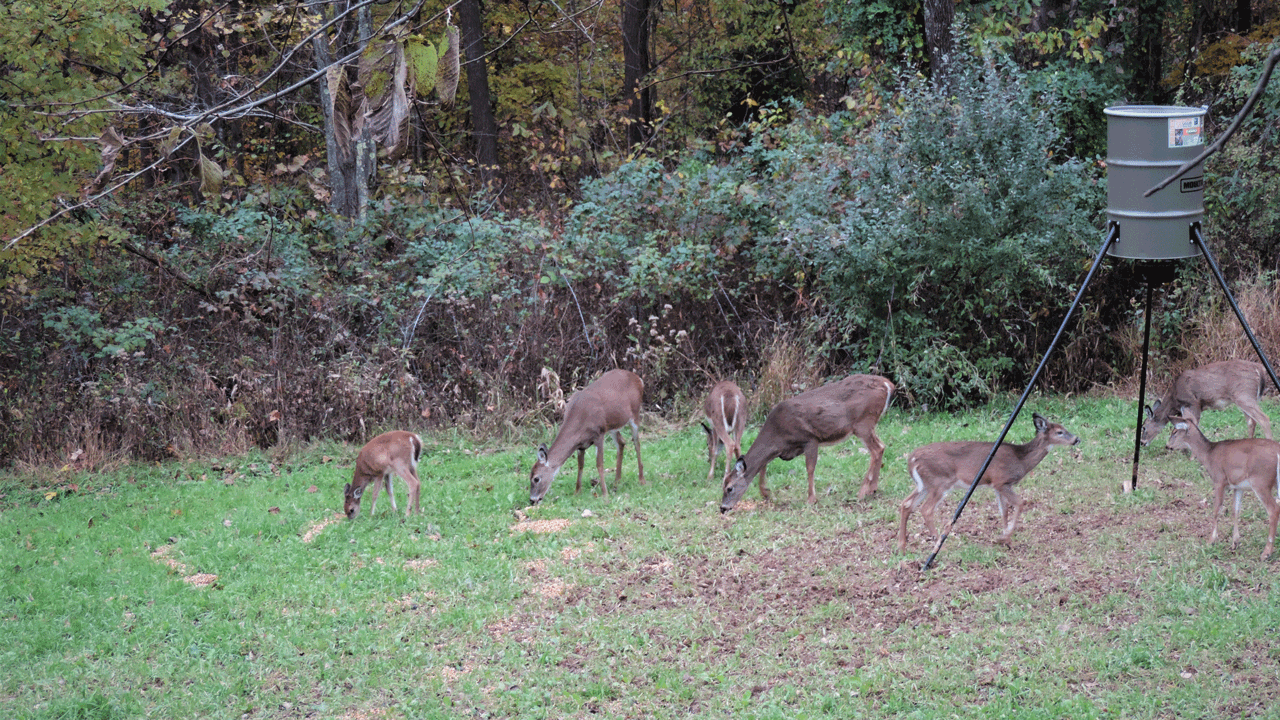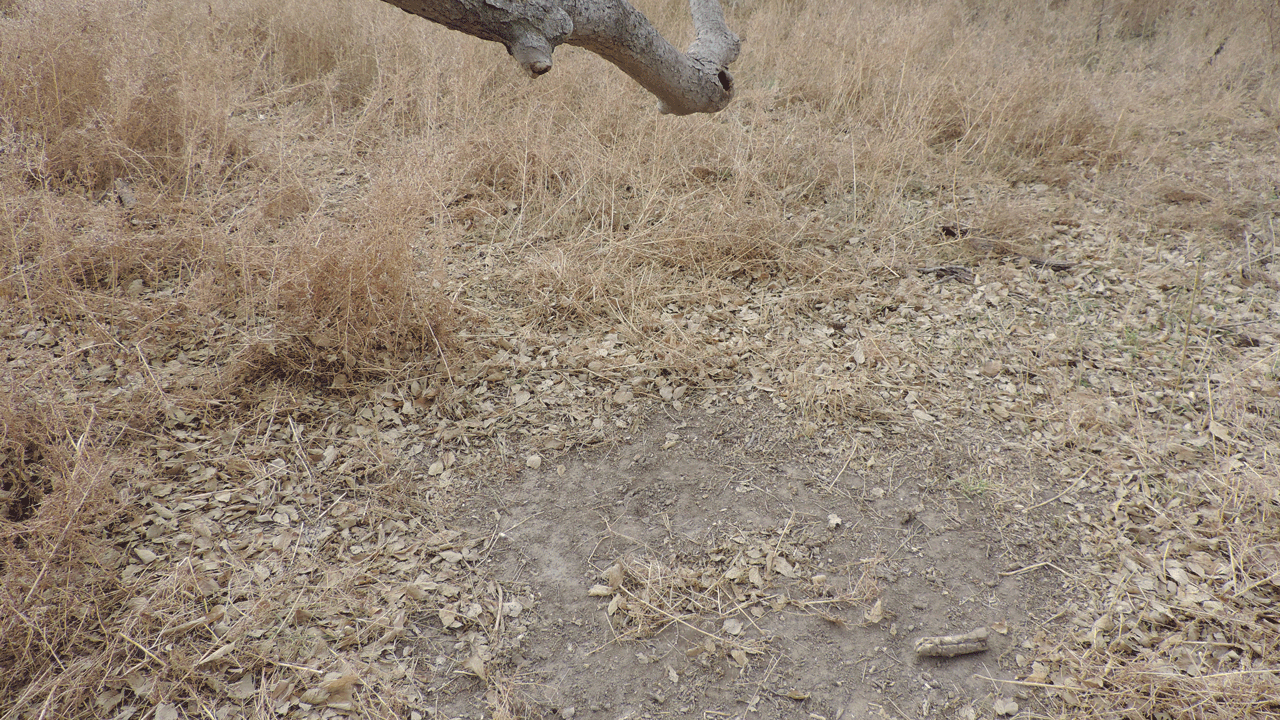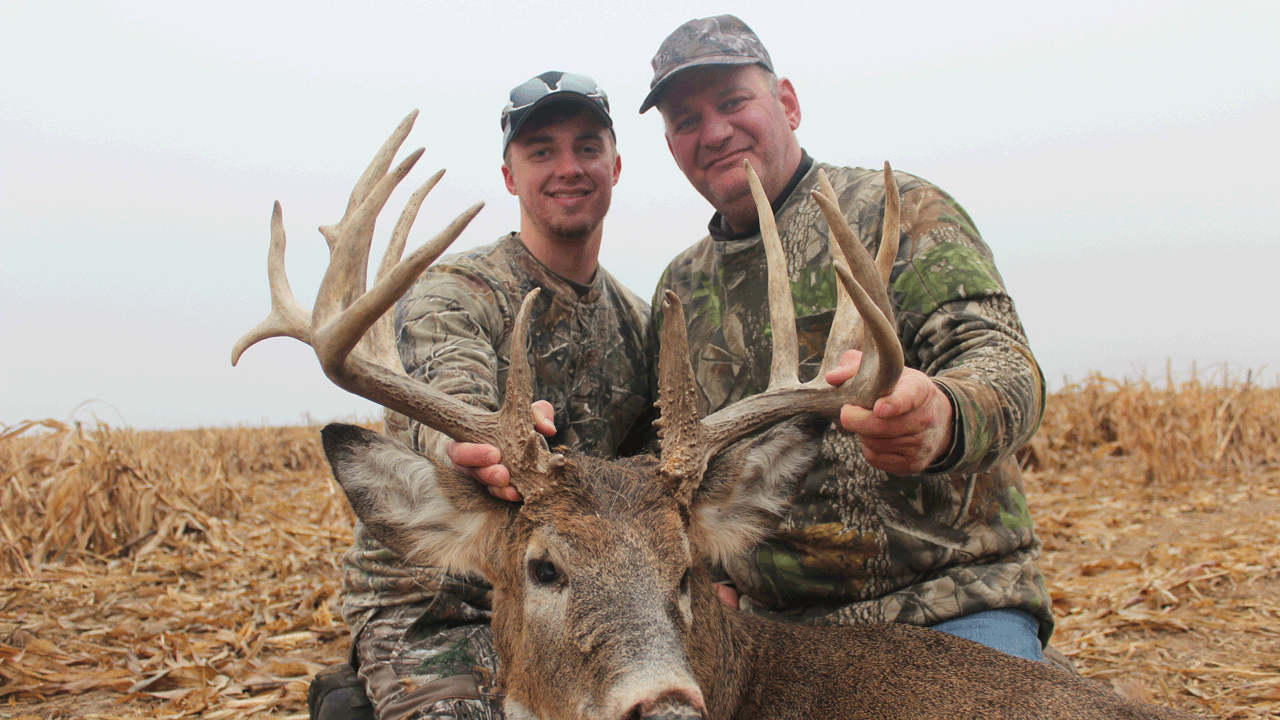Target the largest bucks during their most vulnerable period of the season. Here’s why a post-lockdown buck may be your best bet of the season.
The buck had obviously bred a doe and left her to look for another, darting about erratically, his mouth open and panting. As I reviewed the footage my mother had rolled of this 170-class typical whitetail, I was sick. I’d arrowed a mediocre Kansas buck that morning. The public-land monarch she’d filmed was roaming around in the wide-open at noon, temperatures reaching nearly 80°F. She encountered the giant as she was retrieving a deer cart while I field-dressed my buck. The date was November 18.
For the stationary treestand bowhunter, lockdown can be the season’s most frustrating week to hunt. So, most rut hunters plan their hunting vacations for the first full week of November, which is known as the pre-rut. This is a good time to hunt, but Thanksgiving week is known to produce some of the best action of the year when it comes encounters with a post-season buck.

Mature bucks eat sparingly and burn tons of calories during the rut’s breeding phase. Thus, they come out of lockdown exhausted and hungry, which makes a stand located on a food source (feeder or isolated kill plot) a good bet, especially between 10 a.m. to 2 p.m. (Photo courtesy of http://www.forestwander.com via WikiMedia Commons)
The Problem with Pre-Rut
I’ll never skip the pre-rut. I believe it’s one of the best times to target a big buck. However, I’ve experienced inconsistent results over the years while hunting this period across multiple states. I’ve noticed that when temperatures are warmer, daylight buck movement is mostly constricted to first and last light, and scraping activity seems to always transpire nocturnally.
Now, research has proven that deer rut at virtually the same time every year, regardless of moon phase and weather. But, moon phase and temperatures impact the amount daylight activity we experience.
Here’s one example from my 2016 Kansas hunt. I arrived in Kansas on Nov. 4, and immediately hung stands and trail cameras. For the first week, I saw only immature bucks, does and fawns. By the way, temperatures were at or near 80°F the entire week. I exchanged notes daily with a friend who owns and manages land near where I was hunting.
He and five of his friends were seeing only a few decent bucks during the first several days of November, but overall deer sightings tapered off around Nov. 10. My friend even took off a morning or two to drive and scout, and he saw minimal activity. By exchanging notes, we ultimately concluded that the mature bucks were running does at night. This spotty daytime rutting activity and nocturnal behavior can be attributed to unseasonably warm temperatures and the full moon landing in the middle of November. Noted whitetail expert, the late Charlie Alsheimer, predicted that rut 2016 would be a “trickle rut.” He was right, and it made for frustrating hunting.
Of course, lockdown is even more frustrating than spotty daytime pre-rut activity. So, the question stands: Is there a better time to hunt the biggest bucks in the woods, a time when they’re more susceptible? Let’s review three reasons why it’s possible there is.
Three Reasons Big Bucks Become Vulnerable After Lockdown
Hunger
After chasing does for days with the sole goal of breeding, bucks are exhausted. Their survival depends on caloric intake. When bucks come out of lockdown, they’ll either be looking for another hot doe, food or both.
My friend, Frank Pappas of Colorado who owns property in Kansas, buckles down on food — sometimes all day — starting Nov. 20 (if he hasn’t already punched his tag). Pappas believes Nov. 20-25 is the very best time to target the biggest bucks.
“A friend and I have been compiling trail-cam and hunting data for several seasons, and we’re seeing a common denominator,” Pappas said. “Once bucks come out of lockdown, they head for food. We annually photograph giant bucks at feeders and food plots, often between 10 a.m. and 2 p.m. That’s why it’s so important to hunt all day after lockdown.”
Kody Molzahn of Kansas agrees. “I believe bucks become more vulnerable due to exhaustion from the rut,” he said. “They’re looking for a food source, so during this phase, I tend to hunt feeders and food plots. If I can, I hunt all day. It takes great mental endurance to sit in a treestand all day long, but it could yield a shot opportunity at a huge deer.”
Pappas hunted the Kansas pre-rut unsuccessfully in 2016. During lockdown, he returned home to Colorado to tend to business, but returned to Kansas Nov. 19 with intentions to hunt hard the entire week. His mind was on one buck.
On the morning of Nov. 20, the 185-inch buck came to Pappas’ food plot at 10 a.m. A well-placed arrow yielded a 30-yard recovery.

Does frequent feeders and food plots, so when an exhausted buck comes out of lockdown, he can grab a bite to eat and scent-check does. (Photo by Darron McDougal)
Pick-Up Breeding
As the Pappas buck and the buck I mentioned at the beginning of this article prove, giants make mistakes after breeding. Often, they search frantically for the next estrous doe, occasionally throwing care to the wind and roaming around in the open during broad daylight.
During this time, a good stand location is the downwind fringe of a doe bedding area. I hunted one such stand the same day Pappas killed his buck. I only saw one deer, but he was a mature 150-class 9-pointer. I’d positioned my stand 150 yards west of the bedding area and hunted it on a southeast wind, which put me downwind of the trail I suspected bucks would follow. Like clockwork, he appeared at first light, but veered slightly off course and didn’t offer a shot.
Bucks will sometimes return to scrapes after lockdown. Juice up scrapes with scent and monitor them with trail cameras. That could be another location to hunt, especially if they’re located on the fringes of a food source.

Scrapes usually go dead during the chasing and lockdown phases. However, scrapes located near food generally get checked and worked again after lockdown.
Daylight Activity
It’s commonly said that bucks move all day during the rut. Of course, we must understand the rut phases to target our stand time effectively. First, the pre-rut is the time leading up to breeding. The rut is when the deer are breeding (lockdown). And post-rut is when bucks come out of lockdown.
That said, the pre-rut is when many hunters believe all-day sits are most productive. Pappas disagrees. “During the pre-rut, my hunting time and trail-camera data have revealed that warm temperatures cause most mature bucks to move at first and last light,” he said. “When it’s cold during the first week of November, my friends and I see lots of buck activity during daylight hours, much less so when it’s hot. So, it largely depends on the weather.
“In contrast, we haven’t seen temperatures affect daylight activity during post-rut,” he continued. “Regardless of temperature, we always see mature bucks on their feet at feeders or out searching for does, often midday, after lockdown. This is when I believe all-day hunts are most productive. Again, we see lots of movement between 10 a.m. and 2 p.m. starting around Nov. 20, give or take a day, and lasting approximately five days long.”
Molzahn also hunts all day during the post-rut. “I enjoy hunting after the lockdown phase because bucks are on their feet all day long looking for that last hot doe,” he said. “I’ve seen far better daytime activity during this window than the rut’s other phases.”

Dan Molzahn experienced non-stop deer action while hunting a Kansas feeder on Nov. 20 a few seasons back. At around 4:15 p.m., this 180-class buck gave him a 12-yard shot.
Post-Lockdown Buck – Hit It When It’s Hot
Yes, the post-rut is an excellent time to buckle down over food or near a doe bedding area. It’s when Molzahn’s father, Dan Molzahn, anchored a 180-class whitetail on Nov. 20 one season. “At 9 a.m., I headed to a ground blind north of my house for an all-day hunt,” he told. “Temperatures were in the mid-40s, and wind was blowing from the southeast at 10-15 mph. Deer were moving within 30 minutes of my arrival. I experienced doe and buck movement all day. Bucks seemed to be rundown and tired, but still looking for another doe to breed and something to eat.
“At 4:15 p.m., I had a small doe in front of me when I heard a grunt to the south,” he continued. “I grabbed my bow, and within seconds, the giant buck was standing broadside 12 yards away. I came to full draw, aimed and watched my Lumenok disappear behind his shoulder. He fell 45 yards later. What yielded the 181 3/8-inch buck was patience, lots of work during the offseason, and 365 days of studying deer movement patterns on our property.”
Like Pappas and Molzahn, you can reap a giant reward if you hunt wisely during the post-lockdown period. Study deer and compile their movement patterns over several years. And when the time is right, hunt all day. Anything can happen when bucks come out of lockdown.

 By
By 



